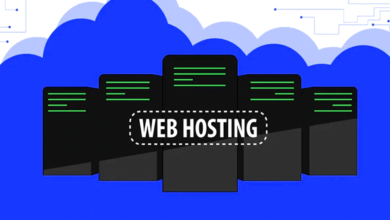Apni Chhat Apna Ghar 2025: Complete Guide to CM Punjab’s Housing Scheme
Apni Chhat Apna Ghar 2025 offers interest-free loans up to Rs 1.5M with Rs 14,000 monthly installments. Learn eligibility, registration & benefits of Punjab's housing scheme.

If you’re tired of paying rent every month and dream of owning your own home in Punjab, the Apni Chhat Apna Ghar 2025 program might be exactly what you’ve been waiting for. Launched by Punjab Chief Minister Maryam Nawaz, this housing scheme is helping thousands of families turn their homeownership dreams into reality with interest-free housing loans and incredibly affordable monthly installments.
The program isn’t just another government initiative that sounds good on paper. It’s actually working. Over 64,000 families have already received loans, more than 9,000 homes are completed, and 52,000 are under construction right now. With a 99.9% loan repayment rate, it’s proving that when you give people a real opportunity, they step up.
What makes this Punjab housing scheme different? For starters, you’re looking at monthly installments of just Rs 14,000, which is probably less than what you’re paying in rent. The government covers 60% of the cost, you handle 40%, and there’s no interest eating away at your payments. If you own even a small plot of land in Punjab, this could be your ticket to building the home you’ve always wanted.
What Is Apni Chhat Apna Ghar 2025?
Apni Chhat Apna Ghar (which translates to “My Roof, My Home”) is a flagship housing initiative launched by CM Maryam Nawaz to provide affordable housing solutions to low and middle-income families across Punjab. The program aims to construct 100,000 affordable homes over a period of four and a half years.
The ACAG program is being executed by the Punjab Housing & Town Planning Agency (PHATA) and overseen by the Housing, Urban Development, and Public Health Engineering Department. This isn’t a small pilot project. It’s a massive undertaking designed to address Punjab’s housing crisis head-on.
Key Features of the Housing Scheme
The Apni Chhat Apna Ghar scheme comes with several attractive features that make it accessible to families who would otherwise struggle to afford homeownership:
- Interest-free loans up to Rs 1.5 million for house construction
- Monthly installments of only Rs 14,000 (less than typical rent)
- Government subsidy covering 60% of total cost
- Three-month grace period before installment payments begin
- Seven-year repayment period with flexible terms
- Three execution models to accommodate different needs
- Province-wide coverage across all districts of Punjab
Who Can Apply? Eligibility Criteria Explained
Before you get too excited and start planning your dream home, let’s talk about who actually qualifies for this housing loan in Punjab. The good news is that the eligibility requirements are straightforward and designed to help as many deserving families as possible.
Basic Eligibility Requirements
To qualify for the Apni Chhat Apna Ghar loan, you need to meet these criteria:
- Permanent Resident: You must be a permanent resident of Punjab according to your NADRA records
- Head of Family: Application must be submitted by the head of the household
- Land Ownership: You must own land measuring:
- 1 to 5 Marla in urban areas
- 1 to 10 Marla in rural areas
- Clean Record: No criminal record or pending FIR against you
- Financial Standing: No history of being a financial defaulter
- NSER Registration: Must be registered with National Socio-Economic Registry with a score below 60%
- Income Limit: Monthly household income should be less than Rs 50,000
Priority Categories
The Punjab housing program gives special consideration to certain vulnerable groups:
- Widows and female-headed households
- Persons with disabilities
- Minorities
- Daily wage laborers
- Rickshaw drivers and small traders
- Families living in rented accommodations
If you fall into any of these categories, your application gets prioritized, though you still need to meet the basic eligibility criteria.
Also Read: How to Apply for the PAVE Electric Bike Scheme 2025 in Pakistan
How the Loan Structure Works
Let’s break down the financial side of things because this is where the Apni Chhat Apna Ghar 2025 scheme really shines compared to traditional bank loans.
Loan Amount and Distribution
The maximum construction loan you can receive is Rs 1.5 million (15 lakh rupees). Here’s how the money gets distributed:
- You pay: 40% of total construction cost
- Government pays: 60% as subsidy
- Your 40% payment: Can be spread over 5 years
- Interest rate: Zero percent (completely interest-free)
Monthly Installment Breakdown
Once your loan is approved and the grace period ends, you’ll pay Rs 14,000 per month for seven years. That’s it. No hidden charges, no variable interest rates, no surprises.
To put this in perspective, many families in Punjab cities pay Rs 15,000 to Rs 25,000 monthly in rent for a basic house. With this scheme, you’re paying less and actually building equity in your own property.
Loan Disbursement Process
The loan doesn’t come as one lump sum. It’s released in installments as construction progresses:
- First installment: Released after document verification
- Second installment: Released at foundation/plinth level completion
- Third installment: Released at lintel level
- Final installment: Released upon completion
This staged approach ensures proper construction progress and prevents misuse of funds.
Step-by-Step Registration Process
Ready to apply? The ACAG registration process has been designed to be as simple as possible. You have two options: online or offline.
Online Registration at acag.punjab.gov.pk
Here’s how to apply online through the official portal:
- Visit the Official Website: Go to acag.punjab.gov.pk
- Click Registration: Find the registration button in the top right corner
- Fill Personal Details:
- Full name as per CNIC
- CNIC number (13 digits)
- Father’s name
- Contact number and email
- Permanent address
- Enter Land Information:
- Plot size (Marla)
- Location details
- Ownership documents
- Upload Required Documents:
- CNIC (front and back)
- Land ownership documents
- Domicile certificate
- Recent passport-size photograph
- NSER registration certificate
- Income certificate
- Submit Application: Review all information and submit
Offline Registration Option
If you’re not comfortable with online applications or don’t have internet access, you can apply in person:
- Visit your local Deputy Commissioner (DC) office
- Go to the Apni Chhat Apna Ghar registration desk
- Bring all required documents in original
- Fill out the registration form with staff assistance
- Submit your application
The offline option is specifically designed for people in rural areas or those unfamiliar with technology. Staff at the DC office will help you complete the entire process for free.
Required Documents Checklist
Make sure you have these documents ready before applying:
- Valid CNIC (National Identity Card)
- Land ownership documents (registry, fard, etc.)
- Domicile certificate of Punjab
- Recent passport-size photographs
- NSER registration certificate
- Income certificate or affidavit
- Bank account details
- No objection certificate (if land is jointly owned)
Three Execution Models Explained
The Apni Chhat Apna Ghar program operates through three different execution models. Each model is designed for different circumstances and needs.
Model 1: Owner-Built Construction
This is for people who already own land and want to build their own house. You get the construction loan, hire your own contractors, and build according to approved plans. This gives you the most control but also requires more involvement in the construction process.
Model 2: Developer Partnership
In this model, private developers partner with the government to build housing units on state land through a land-sharing arrangement. Developers handle all construction costs in exchange for a portion of the land. This is ideal if you don’t own land but qualify for the program.
Model 3: Ready-Built Apartments
The government constructs apartment buildings in urban areas and allocates them to beneficiaries at subsidized rates. This is the fastest way to get housing since the units are already built or under construction.
All three models offer the same interest-free financing terms, so you can choose based on your situation and preferences.
Major Cities Covered in Punjab
Initially, the CM Punjab housing scheme focused on major urban centers, but it’s now expanding across the province. Here are the key cities where the program is active:
- Lahore
- Rawalpindi
- Faisalabad
- Multan
- Sialkot
- Sargodha
- Gujranwala
- Bahawalpur
- Sahiwal
- Rahim Yar Khan
- And expanding to all 36 districts
The program prioritizes areas with high housing demand and where land is available for construction. Rural areas are also included, with adjusted land size requirements.
Real Impact: Success Stories and Statistics
The numbers tell a compelling story about how the Apni Chhat Apna Ghar 2025 scheme is changing lives:
Current Program Statistics
- 64,000+ loans distributed to deserving families
- Rs 74 billion disbursed in total loan amount
- 9,000 homes completed and handed over to families
- 52,000 homes under construction across Punjab
- 99.9% loan recovery rate showing beneficiary commitment
- Target of 75,000 loans by August 2025
- 500,000 jobs created through construction activities
Real-World Impact
The scheme has created tangible changes in people’s lives:
For Families: Thousands of families who spent decades in rental properties now own their homes. A rickshaw driver from Lahore, a daily wage laborer from Faisalabad, and a widow from Multan all share the same story: they never thought homeownership was possible until this program came along.
For Communities: Areas that were previously slums now have proper housing with access to clean water, electricity, and sanitation. This improves not just individual lives but entire neighborhoods.
For the Economy: Construction of 100,000 homes generates massive employment. From laborers and masons to suppliers and contractors, the ripple effect benefits the entire economy.
Benefits Beyond Just a Roof
While getting a house is the obvious benefit, the Apni Chhat Apna Ghar scheme delivers several other advantages:
Social Benefits
- Reduced overcrowding: Families move out of cramped shared accommodations
- Improved health: Better ventilation, sanitation, and living conditions
- Educational opportunities: Stable housing helps children focus on studies
- Social dignity: Homeownership brings respect and social status
- Community building: Permanent residents invest in neighborhood improvement
Economic Benefits
- Asset building: Your home becomes generational wealth
- Financial stability: No more unpredictable rent increases
- Credit access: Property ownership improves creditworthiness
- Investment opportunity: Property values appreciate over time
- Cost savings: Monthly payments less than typical rent
Long-Term Security
Perhaps the biggest benefit is peace of mind. You’re not at the mercy of a landlord. You can’t be evicted. Your children have a stable home. That security is priceless.
Common Mistakes to Avoid When Applying
After helping thousands of families register, the program administrators have identified common mistakes that delay or reject applications:
- Incomplete Documents: Make sure every document is complete and legible
- Wrong Land Size: Double-check that your plot meets size requirements
- Joint Ownership Issues: If land is jointly owned, get proper NOCs
- NSER Score: Ensure your NSER score is below 60% before applying
- Income Proof: Provide accurate income documentation
- Criminal Record: Any FIR or criminal case makes you ineligible
- Multiple Applications: Applying multiple times doesn’t increase chances
Getting Help: Contact Information and Support
If you need assistance with your Apni Chhat Apna Ghar registration or have questions about the program, here are the official contact channels:
Official Helpline Numbers
- Phone 1: 042-99213419
- Phone 2: 042-99213428
- Toll-Free: 0800-09100
Online Resources
- Official Portal: acag.punjab.gov.pk
- Punjab Government: punjab.gov.pk/apni-chhat-apna-ghar
- Monitoring Unit: smu.punjab.gov.pk
You can call these numbers during office hours (9 AM to 5 PM, Monday to Friday) to get information about your application status, eligibility questions, or technical support with registration.
Comparison with Other Housing Schemes
How does Apni Chhat Apna Ghar compare to other housing programs in Pakistan?
vs. Mera Pakistan Mera Ghar
The federal government’s Mera Pakistan Mera Ghar scheme charges 3% interest for the first five years and 5% for the next five years. In contrast, ACAG is completely interest-free. ACAG also has a more generous subsidy structure with the government covering 60% of costs.
vs. Naya Pakistan Housing Program
While Naya Pakistan Housing focused on apartment construction in specific cities, ACAG allows you to build on your own land with flexible execution models. ACAG also has lower monthly installments and better terms for low-income families.
vs. Bank Housing Loans
Traditional bank loans typically charge 12-18% interest, require 20-30% down payment upfront, and have strict income requirements. ACAG’s zero interest, 60% government subsidy, and Rs 14,000 flat installment make it far more accessible.
Future Plans and Expansion
The Punjab government isn’t stopping at 100,000 homes. Based on the program’s success, there are plans to:
- Expand to all 36 districts of Punjab
- Increase the number of beneficiaries in Phase 2
- Introduce larger loan amounts for bigger plots
- Add options for home improvement loans
- Launch a commercial property scheme for small businesses
CM Maryam Nawaz has emphasized that affordable housing is a fundamental right, not a privilege. The goal is to ensure every middle-class family in Punjab has access to homeownership by 2030.
Tips for Successful Application
Want to maximize your chances of approval? Follow these insider tips:
- Apply Early: Don’t wait for the last minute as slots are limited
- Get Documents in Order: Have everything ready before starting application
- Check NSER Score: Register with NSER if you haven’t already
- Verify Land Details: Ensure land records are up-to-date and accurate
- Keep Contact Info Updated: You’ll be contacted for verification
- Follow Up: Check application status regularly through the portal
- Be Patient: Processing takes time due to high volume of applications
Final Thoughts
The Apni Chhat Apna Ghar 2025 scheme represents a genuine opportunity for thousands of Pakistani families to achieve homeownership. With interest-free loans, affordable installments, and government subsidies covering 60% of costs, it’s one of the most generous housing programs the country has seen.
Yes, there’s paperwork involved. Yes, you need to meet eligibility criteria. But if you’re a permanent Punjab resident with a small plot of land and a dream of owning your home, this program was designed for you.
The 99.9% loan repayment rate shows that beneficiaries are taking this opportunity seriously. Thousands of families are already living in their new homes, and thousands more are watching their homes being built. Don’t let this opportunity pass you by.
Start gathering your documents today. Check your eligibility. Visit the official portal at acag.punjab.gov.pk or your nearest DC office. Your own roof, your own home, might be just one application away.
Ready to start your homeownership journey? Visit the official Punjab government portal to begin your application process today, or learn more about related programs at the Chief Minister’s Special Monitoring Unit.
This article was last updated in October 2025. Program terms and conditions are subject to change. Please verify current requirements on the official government portal before applying.











